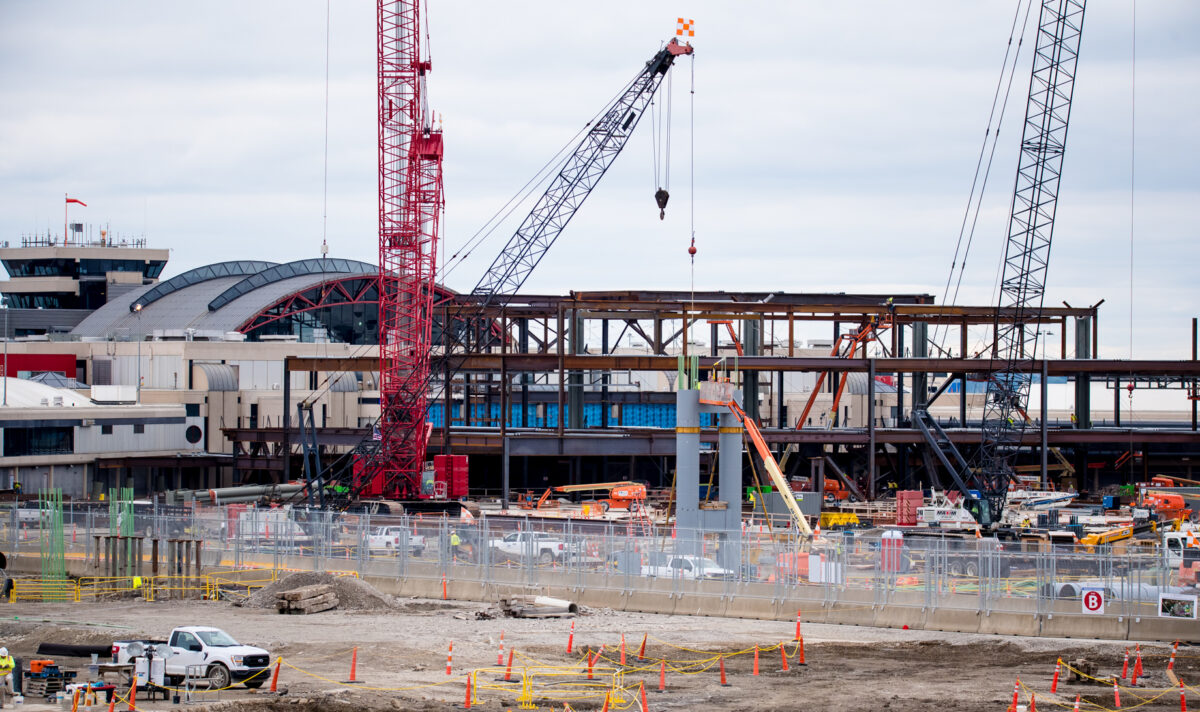
Airport of the Future Begins to Take Shape
The future of travel for Western Pennsylvania took a big step forward this month when construction workers raised the first pieces of vertical steel that make up the frame of a new terminal for Pittsburgh International Airport.
Some of the steel installed includes the first of 38 signature steel columns resembling trees. They will not only serve an important structural need but also provide an aesthetic sense of place, evoking the woods of Western Pennsylvania.
“This is an exciting time, where the frame of Pittsburgh’s new front door is becoming a visual reality,” said Christina Cassotis, CEO of the Allegheny County Airport Authority, which operates PIT.
The new facility, scheduled to open in 2025, will transform an airport built for one airline and its connecting passengers into one that will serve the millions of people who live in or visit the Pittsburgh area.
Nestled between Concourses C and D, the building will greatly reduce the distance for passengers and their checked bags to travel from ticket counter to airplane.
“When the new facility opens, the airport will reflect the beauty of the region and improve the customer experience for everyone who calls the Pittsburgh region home by cutting the time to go from curb to gate in half, reducing and stabilizing costs, and being a model of sustainability, safety and security in the 21st century,” Cassotis said.
The facility is being built to suit the Pittsburgh community, and it’s being built by Pittsburgh, as well; local contracts make up 85.5 percent of the project. The signature trees, for example, are being fabricated at Sippel Steel Fab in nearby Ambridge, Beaver County, which has a long history intertwined with some of America’s greatest achievements.
American Bridge fabricated steel for the Chrysler and Empire State buildings in New York in the facility that houses Sippel’s plant today. American Bridge also constructed amphibious landing crafts during World War II and built components for aircraft carriers in this same facility.
Some 16,000 tons of steel—all domestic and all fabricated locally—are being used in the project. That steel will be held firmly in place with 9.5 miles of field welding and fastened with 182,000 connecting bolts.
Recent Comments